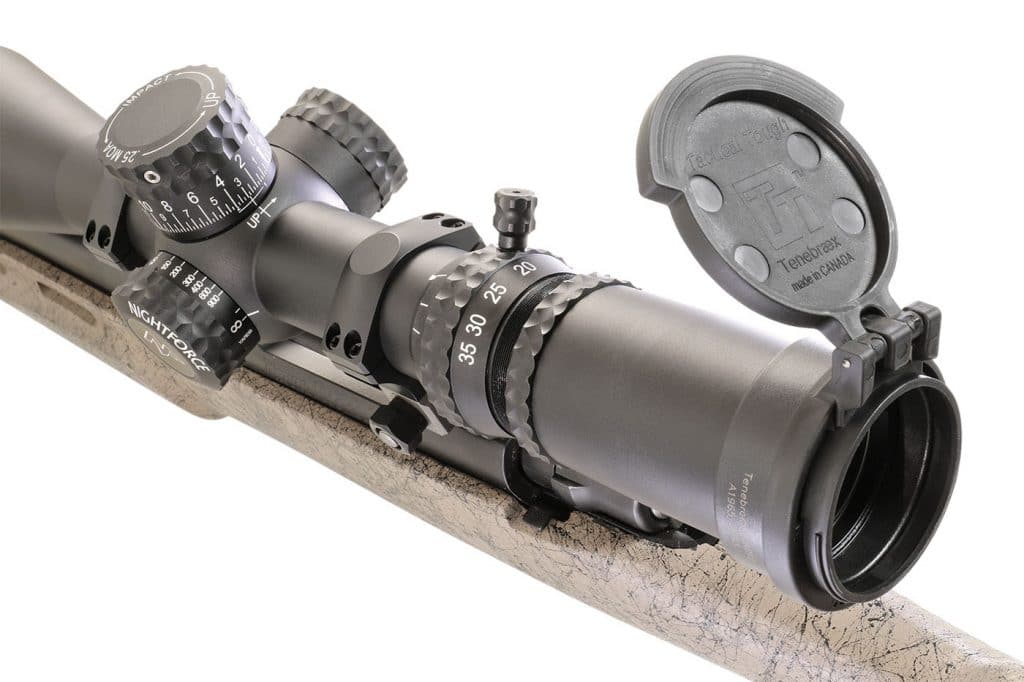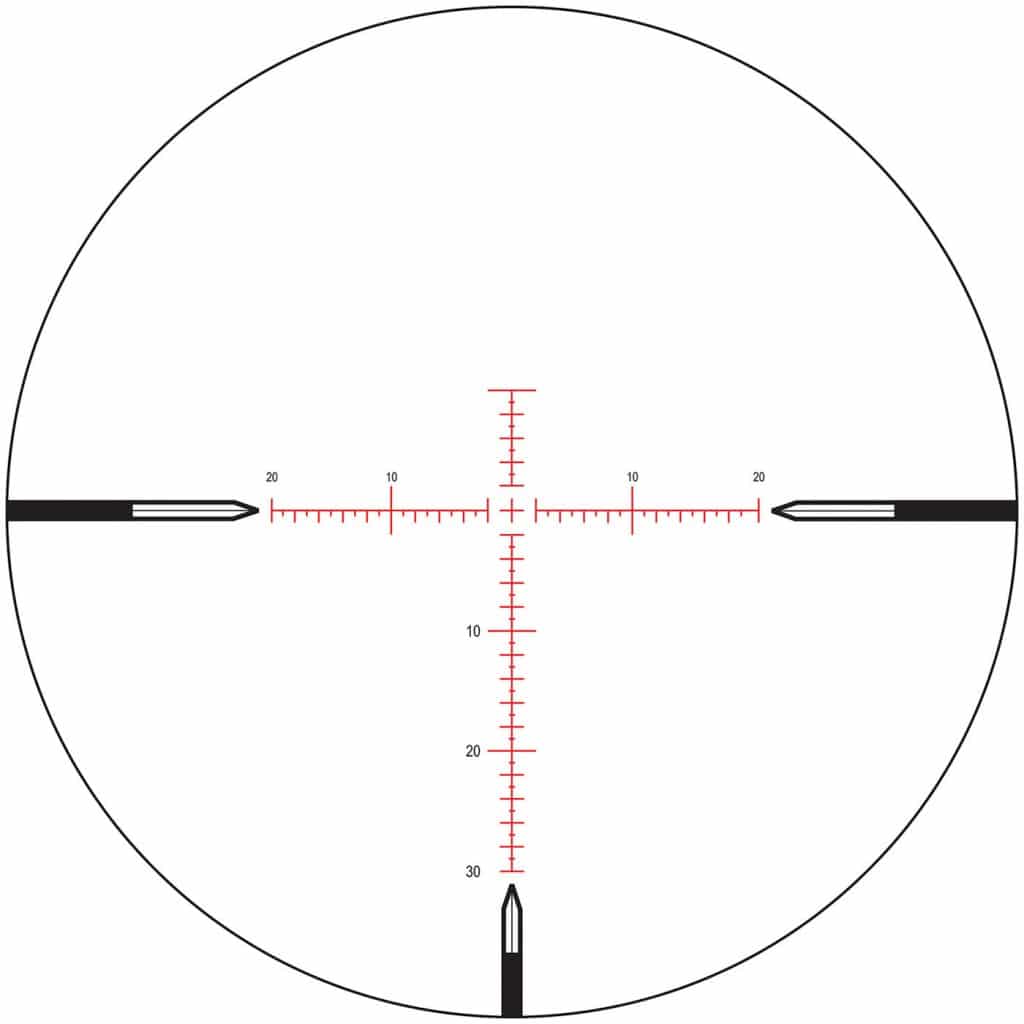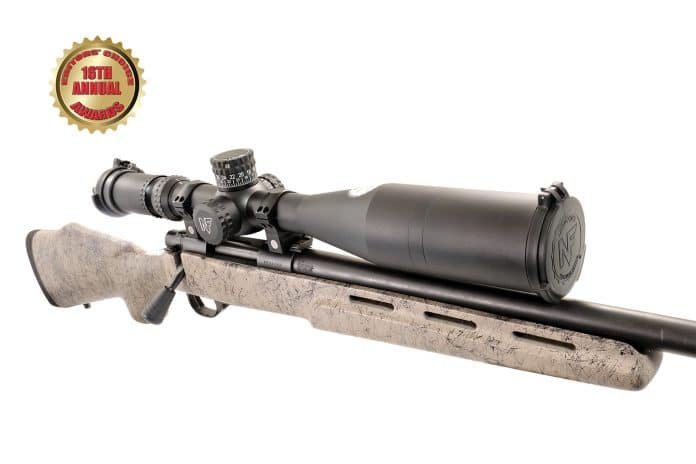This super-scope may be the closest thing yet to the ideal long-range optic!
Last I looked, Aprillia’s RSV4 RF motorcycle cost $22,000. Its 201 horses outnumber those of many automobiles. Zero to 60? Dunno. Crack the throttle, and scenery instantly blurs behind your tears.
The journalist charged with describing this carnivorous machine had a tough job. Given the price, readers know it’s quick, and probably functions as designed. After long hours on the keyboard, he wrote of “. . . confident control responses [that] make this caricature of danger deceptively easy to ride very fast.”
I found as difficult a review of what Nightforce produced in its quest to build “the ultimate long-range riflescope.” The ATACR (Advanced Tactical Riflescope) series evolved from the NSX scopes I’ve used to give one-hole rifles a chance to shoot into one hole. However accurate the barrel or load, itty bitty groups depend on your ability to aim at the same place for each shot.
This project blessed me, for a week, with a 7-35×56 F1, the most powerful ATACR. Its brethren: a 4-16×42 F1, a new 4-16×50, a 5-25×56 F1 and a 5-25×56. F1 denotes reticles in the first or front focal plane. Scopes without that designation have second-plane reticles. Like all ATACRs, the 7-35×56 boasts a 34mm tube and .1-mil or .25-MOA clicks in windage/elevation adjustments. At 39.25 ounces, it is the heaviest of the group, and at 16 inches, the longest. Still, physical differences between the 7-35x56mm and 5-25x56mm are small.

I mounted the 7-35x56mm F1 on an accurate Savage rifle bored to 6.5 Creedmoor. The 6.5 inches of free tube let me place the Nightforce X-Treme Duty Ultralight rings just where I wanted them. Machined from 7075-T6 aluminum, these four-screw rings have titanium jaws and cross-members. Bantam-weight brawn! Nightforce lists four heights in 34mm rings, six in 30mm, all for Picatinny rails or Weaver bases.
My sample scope featured a MOAR reticle, one of three on tap. The MIL-R is similar. Both have illuminated floating center bars with thicker lines than many traditional target reticles—a boon for aging eyes that in no way compromises precision! Tics and bars help you determine range and compensate for bullet arc and drift. The on-off switch for “Digillum” illumination is at the center in the focus/parallax knob.
Adjustment ranges of 60 minutes (windage) and 100 minutes (elevation), give the 7-35x56mm great reach, especially when paired with Pic rails with 20 minutes of gain. Adjustment ranges in mils: 17 and 27. Each dial rotation moves point of impact 30 minutes or 12 mils. Nightforce’s ZeroStop feature gives you instant return to zero, no matter how many times you’ve turned the dial, or how many revolutions.
After zeroing, I tested click values and repeatability by “shooting around the square.” The first group established a corner. Then I adjusted the scope 20 clicks down, 20 right, 20 up and, finally, 20 left to the initial setting, firing after each change, using the same sight picture. In this exercise, the last shots should joined the first. Given quarter-minute clicks, each handful of 20 clicks should shift impact 5 inches.

The sample scope excelled! After 80 clicks around the square, its adjustments put the last bullets 0.3 inches from the first (group centers). Another 40 clicks to impact on a diagonal delivered a bullet 0.4 inches from the second knot. This rifle can’t shoot much tighter, and I’m a half-minute marksman on good days!
Each click nudged impact .275 inches, instead of the claimed .250. Not an unusual disparity, and once you know it, insignificant. Ditto slight, predictable vertical shifts with 20-click lateral moves.
Optics? Since I peered through an NSX years ago, I’ve considered Nightforce scopes among the best, with bright, sharp images in flat fields free of color fringing. Thankfully multi-coated ED glass (for high light transmission and “extra-low dispersion” of color bands). Eye relief: plenty, at 3.5 to 3.3 inches.
The floating reticle affords unobstructed view and precise aim at small targets far away. The first-plane location means the reticle stays the same apparent size relative to the target at every power setting, so you can range targets fast at any magnification. And it stays perfectly centered through power changes.
The big 56mm objective lens is all but essential, given the 7-35x power range. At 7x, it yields an exit pupil of 8mm (56/7), a shaft of light bigger than your eye can employ even when fully dilated to 7mm. At 10x, you get an EP of 5.6″, a practical number, or about as much as you can use shooting in dim light. At 18x EP shrinks to about 3mm, still big enough for mid-day pokes at marmots. In my view, magnification over, say, 28x has little if any value beyond Benchrest matches. The tiny field (3.4 feet at 35x!); trembles with each heartbeat. Ripples of mirage become crashing breakers.
Shooters lusting for a brilliant, fully equipped long-range sight with five-times power range must put the Nightforce ATACR 7-35×56 F1 on their short list. Street price for this beauty: $3,492. OK . . . but it’s still less costly than an Aprillia RSV4 RF. Contact Nightforce Optics, Dept. OT; Tel.: (570) 368-3920; Web: www.nightforceusa.com





















